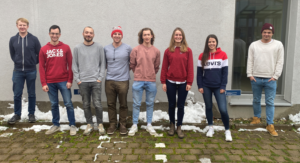VitalSense


Project Description:
A main problem in modern palliativ care is the missing ability to notice if a patient state of health declines. Often it would be possible to recognize a change in health conditions while observing a patient. But the doctors are only seeing the patient in a short period during visits where the patient might behave differently due to this attention. If the patient is staying at home it is even harder to notice a deterioration of the condition. This often leads to many patients being in a very bad condition, which could have been prevented in an earlier state, when they contact the emergency doctor. To measure a certain condition of a patient “adl’s” (activities of daily living) are helpful. This includes the basic behaviour routines of a person such as sleeping, moving, bathing ect. Those activities are essential for determinating what state of health a person has.
The goal of the Project is therfore to measure different activities of daily living (ADL) for palliative care patients – mainly focused on patients staying in their home enviroment. Those measurements should help the careworkers to identify patients whose health is deteriorating.
Therefore a focus group was created to find out which ADL are suitable for define a certain level of vitality. The key adl’s for this project are: time spend in bed, specific motor skills and moving. Those adl’s should than be measured and analysed with developed devices to identify the respective patients.
Development Team: Paul Maas, Martin Sammer, Jasmin Riegel, Robert Stoll, Michael Kitzberger, Nicola Engel
Scrum Master: Matthias Zürl, Michael Nissen
Partner: Universitätsklinikum Erlangen Palliativmedizinische Abteilung
